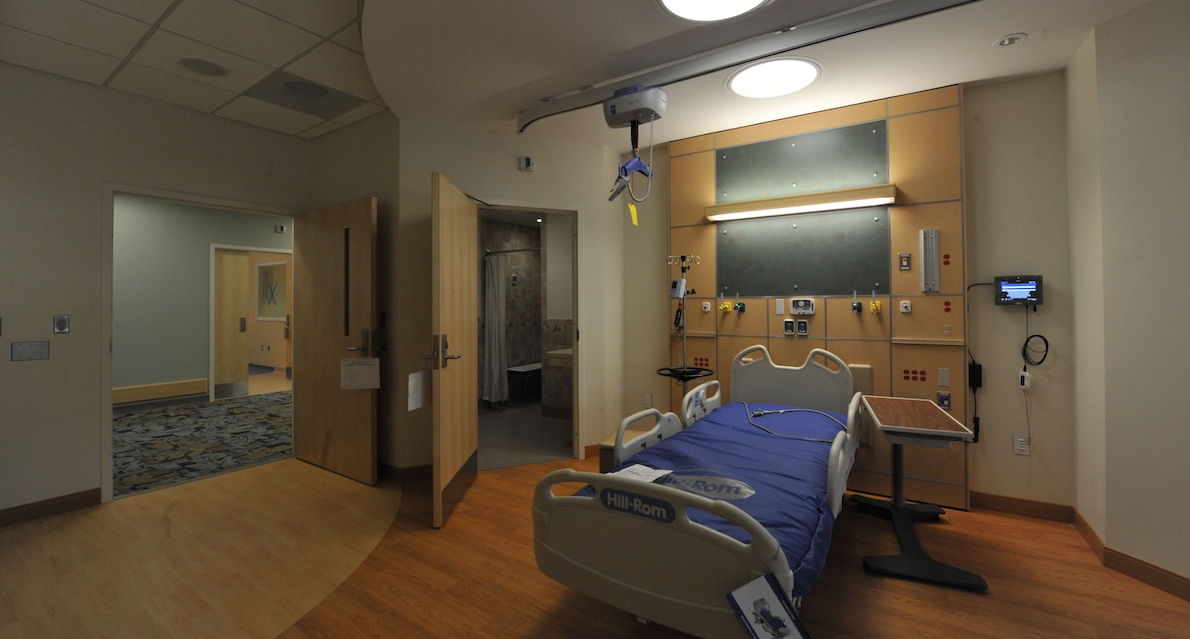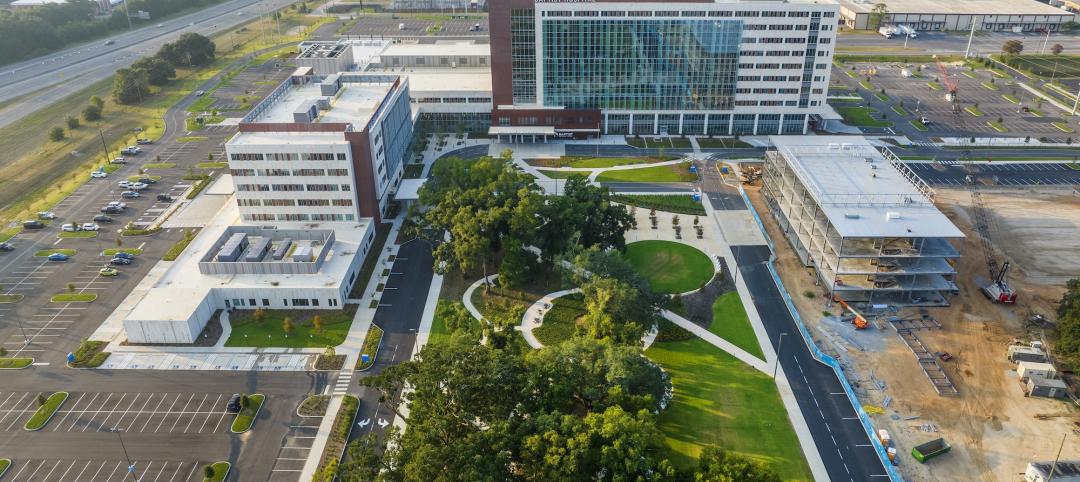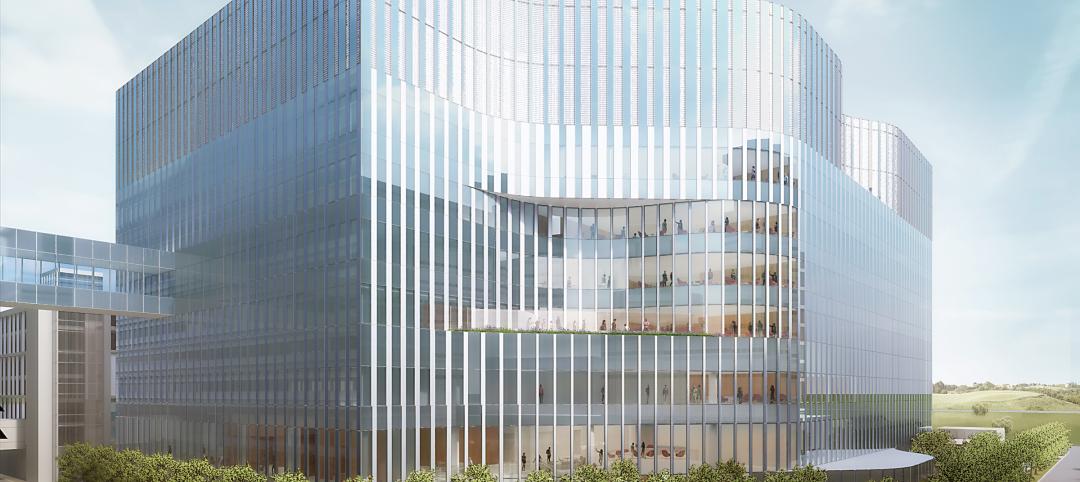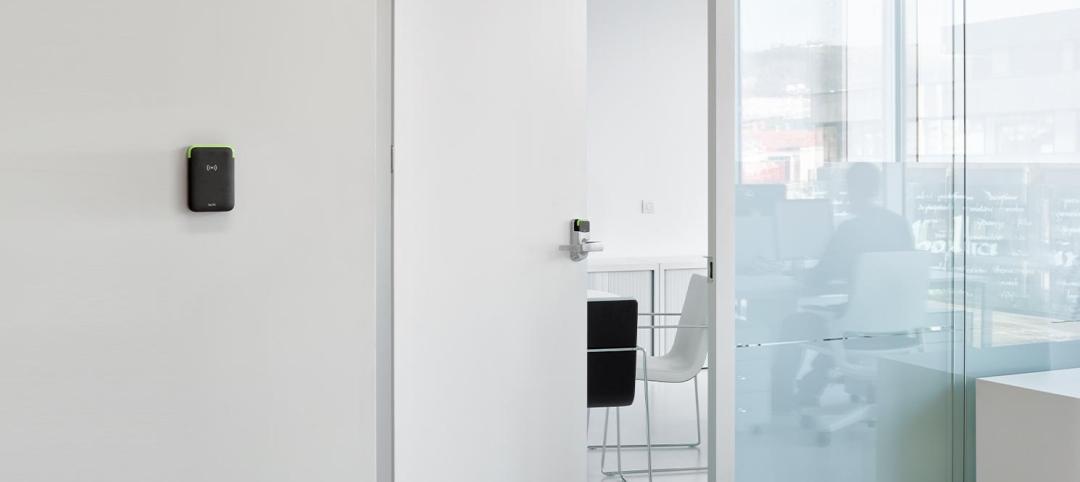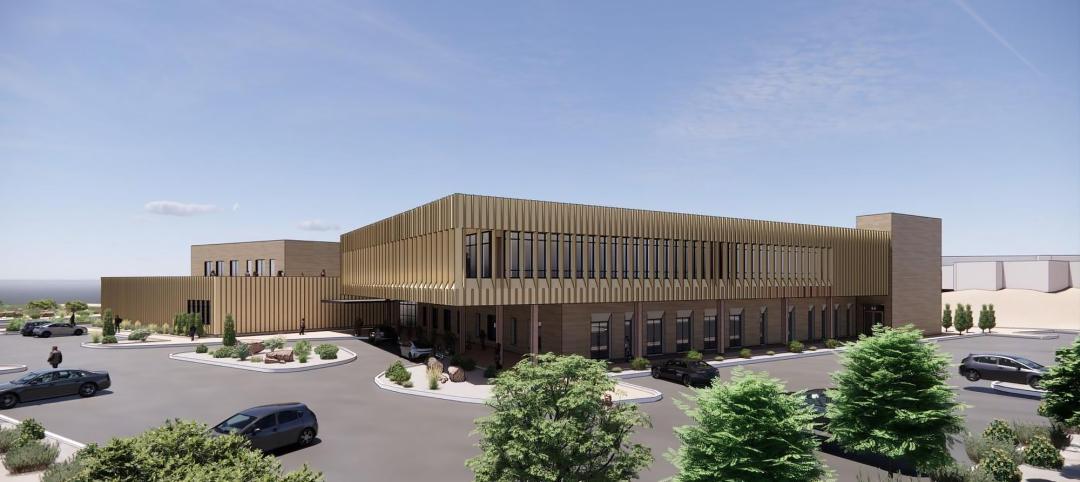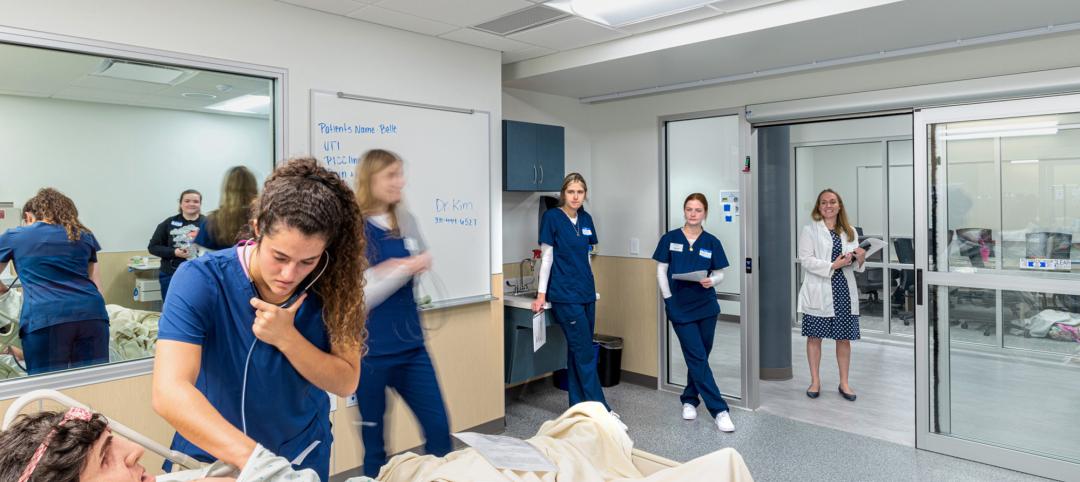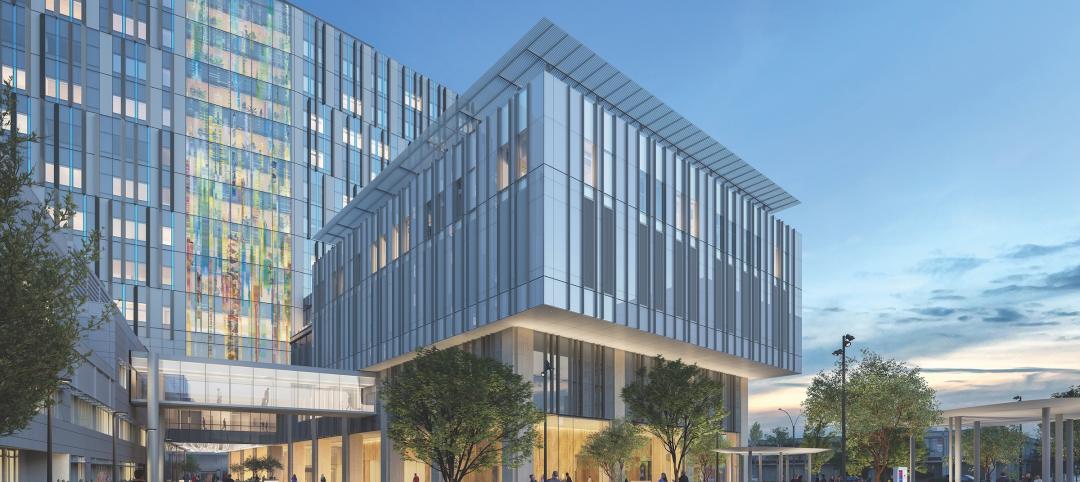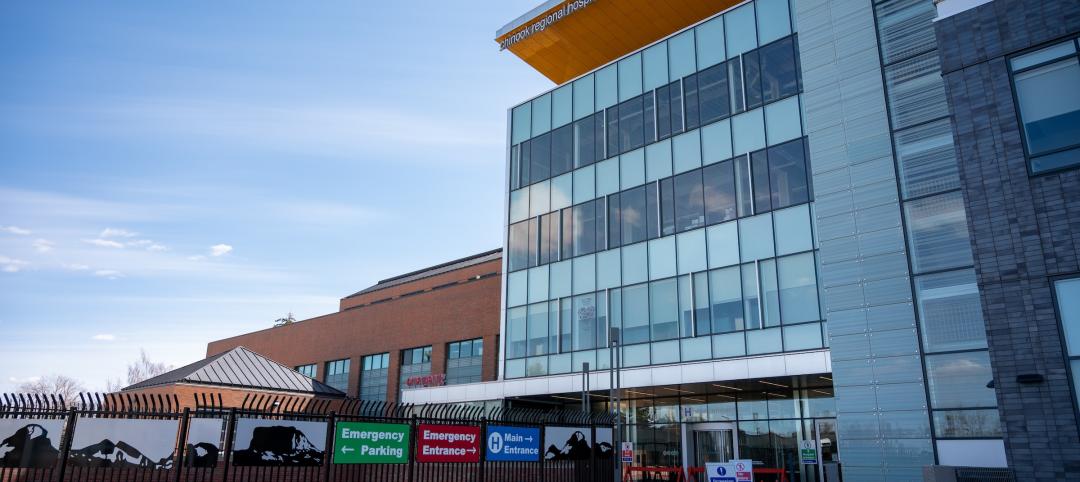With a constant drive for operational efficiencies and reduction of costs under an outcome-based healthcare environment, there are increasing pressures to ensure that sustainability initiatives are not only cost effective and provide a return on investment, but socially and environmentally responsible. Oregon Health & Science University (OHSU) is in the business of wellness—the desired outcome.
An effective sustainability program within a healthcare environment is the hub of the wheel that can produce several outcomes, such as workforce engagement, that are key drivers for higher reimbursements within the healthcare mission. It’s also the prioritization of these potential outcomes that can drive the creation of the desired operating vision.
This is a challenging balance within an organization that has competing yet synergistic missions of healthcare, research, and academics. With an established operating vision as the foundation, the following provides a road map for achieving a highly effective sustainability program within OHSU’s healthcare mission.
BUILDING DESIGN & SYSTEMS
There are several benefits and results noted within the OHSU Fast Facts related to the design and systems that reflect the dedication to sustainability within a wellness environment. However, within this innovative approach are noted challenges that required strategic solutions to achieve the desired cost savings and operational functionality while balancing the desire to achieve high occupant and patient satisfaction.
MEP System Design. When designing the MEP systems for a sustainable building a common approach that can achieve the desired energy savings is to “right size” the mechanical and electrical systems. This involves system design with only the necessary capacity to serve the programs anticipated at the time of construction. By doing so, you reduce the added energy consumption while lowering your initial capital investment.
However, facility operators, who have significant experience with managing healthcare facilities, immediately understand the challenges that “right sizing” may cause. Healthcare facilities are in a perpetual state of change, constantly evolving to meet the needs and demands of the industry. Therefore, it is impossible to know during the project design phase, the long-term changes that will impact the capacity of these systems. By “right sizing” systems, future expansion and renovation possibilities may be limited.
In addition, in many areas of healthcare, there is a minimum of N+1 redundancy to meet the basic life support and other regulatory requirements. Special attention must be paid to the types of systems and the control sequencing to help ensure that maximum efficiencies can still be attained. As a result, additional operational cost impacts may be incurred due to a higher level of sophisticated programming, engineer skill-set and training required ensuring limited system disruption and/or operational impacts.
Balancing Innovative System Technology. The highly innovative system technology resulted in a design that included many firsts for a healthcare facility of its size and complexity. One of the key innovations was to install a membrane bioreactor wastewater treatment system that processes all of the sanitary waste on-site. The system transforms the wastewater into a non-potable water source and harvests rainwater and excess groundwater to reduce the dependence on municipal water supply by an astonishing 60%.
However, this innovative system is not without challenges. A membrane bioreactor is a living machine, and with the use of high level sterilants (used for disinfecting medical equipment) there is potential for significant disruptions to the waste system. To mitigate this risk, a comprehensive chemical waste disposal policy was created in collaboration with OHSU’s Environmental Health & Radiation Safety team to ensure occupants were adequately trained on the process of using and disposing of chemicals down drains.
In addition, on-going education was implemented to account for employee turnover and new chemical introduction. Signs were also posted above sinks and drainage areas that have a higher potential for chemical use to address complacent use.
Despite the noted water savings, the upfront cost of installing the system was significant, but was slightly offset by the deferral of system development fees. Also, an on-site wastewater treatment system requires ongoing operational costs, including daily lab testing, special environmental permits, and labor to oversee the treatment plant. Although, there was considerable thought for the financial investment, OHSU also focused on balancing their decision to reduce the impact on the environment and remain socially responsible in regard to the community’s wastewater system. This is a balance of planet, people, and profit—known as the three P’s of sustainability.
There were innovative design elements within the central utility plant (CUP), as well. The CUP utilizes a fuel source to generate power and then transfers the heat from this process into a heating source. Five natural-gas-fueled microturbines can transfer up to 300kw power resulting in the capability of generating up to 30% of the facility’s electricity. The heat generated by the turbines provides space heating, domestic water heating, as well as heating for three on-site swimming pools.
With power relatively cheap in the Pacific Northwest, the challenge is to ensure that efficiency of the turbines is maximized based on the demand for heat while balancing the need for electrical production as outlined within the microturbine carbon impact graphic below. If the costs creep slightly higher, the environmental impact reduction over using traditional methods of heat production and purchasing utilities will be a deciding factor when evaluating the three P’s.
SUSTAINABLE OPERATIONS
Environmental Services (EVS) - Cleaning. The EVS vendor, GCA Services, is a national janitorial company that provides cleaning services at the building. The GCA cleaning team has established a green cleaning program that reflects use of green cleaning practices and products.
To further enhance energy savings, GCA implemented a day cleaning schedule in 2011. This proved to be challenging in a healthcare environment so the hours were adjusted to create staggered afternoon start times based on the operating hours of each respective clinic. This allowed occupants to get to know their cleaner while limiting disruptions within exam rooms and other patient care areas. The benefits of day cleaning are as follows:
• Energy savings and environmental consciousness
• Improved occupant satisfaction via enhanced 1:1 occupant-cleaner relationships and confidence
• Office space is visibly and routinely well cleaned
• Employee responsibility and security
• Less turnover and enhanced productivity
As a LEED Platinum building, the operations team strives to promote green practices throughout the building. The selection of cleaning supplies is also a key component to establishing a green cleaning program especially with balancing the limitations of chemical usage with the on-site wastewater treatment system.
Healthcare requires a higher level of disinfection to prevent cross contamination of blood borne pathogens. Non-green disinfectants are used in patient care areas while green approved products are used in non-patient care areas. There is a balance in knowing when certain products are needed while also maintaining the green standard with the LEED certification requirements.
Waste Management. A fully comprehensive recycling program was implemented upon occupancy of the building through collaboration with the City of Portland’s Bureau of Planning & Sustainability. The program includes recycling for paper, plastic, tin, aluminum, glass, cardboard, light bulbs, batteries and composting.
But, how do you ensure that you are achieving an effective waste management program within a very busy patient care environment? Simple, create a competition and promote the benefits and results to enhance buy-in and a high level of engagement.
To promote better recycling habits, CHH does an annual waste audit to highlight the amount of recyclables that are being put in the trash. The audit is conducted on a regular business day with normal volume of occupants and visitors. The project team physically separates the entire waste stream during the audit period into its component parts, measures each waste type by weight and tracks the amount of recyclables that were properly diverted from the waste stream via the CHH recycling program.
Tenants are notified of their results and their overall performance compared to the previous year and the best performance is recognized and awarded. With promotion of the results and continuing tenant education, OHSU hopes to see improved results year after year as it creates a competitive environment among the tenants.
STRATEGIC COMMUNICATIONS
Occupant education is a main driver for ongoing buy-in and consistent satisfaction and should constantly evolve through various communication paths to achieve a broadly engaged audience. The web portal at www.southwaterfrontcampus.com serves as a centralized intranet that provides resources such as the tenant handbook, access to the Computerized Maintenance Management System (CMMS), and other general tools and announcements.
Building-wide, tenant meetings are held on a quarterly basis to provide general updates to department managers and service line contacts for the campus. This collaborative approach ensures there is a strong foundation for the program delivery as well as OHSU’s contribution to setting a high performance standard and results. A quarterly newsletter is distributed to tenants in the weeks following the tenant meeting, providing highlights on all information resented. It is the combination of collaborative meetings coupled with follow-up visual information via several communication paths that has contributed to a high level of occupant engagement.
In addition, an annual sustainability report is provided to OHSU and building occupants providing a visual synopsis of how the platform and LEED framework contribute to the overall program results and return on investment to reinforce dedication to the sustainable strategies implemented under the operating vision.
Surveys are also deployed to occupants annually, as well as via the CMMS throughout the year to identify areas of success and improvement. The high level of engagement is apparent within a busy healthcare environment with a high level of survey participation over the past nine years with a department response rate above 64% versus an industry-standard that is typically around only 20%. In addition to occupant engagement, you must have the right tools to deploy an effective program. A detailed playbook that defines program roles and responsibilities amongst team members will ensure consistent implementation and outcomes. The playbook serves as an invaluable training guide for new hire onboarding, as well as a blueprint for future growth.
Achieving sustainability in a healthcare environment can be challenging. A solutions oriented approach for developing systems, implementing technology and investing in team resources will aid in building the foundation necessary to deliver the desired results.
About the Author: Dyann Hamilton is an Alliance Director at CBRE with over 20 years of commercial real estate experience. She is responsible for on-site facilities and project management services, lease administration and accounting for over 1 million square feet of real estate in the South Water-front District for Oregon Health & Science University, Portland State University and Oregon State University. Her portfolio includes healthcare, research and academic use within LEED-Platinum Certified facilities.
Related Stories
Healthcare Facilities | Dec 19, 2023
A new hospital in Duluth, Minn., is now the region’s largest healthcare facility
In Duluth, Minn., the new St. Mary’s Medical Center, designed by EwingCole, is now the largest healthcare facility in the region. The hospital consolidates Essentia Health’s healthcare services under one roof. At about 1 million sf spanning two city blocks, St. Mary’s overlooks Lake Superior, providing views on almost every floor of the world’s largest freshwater lake.
Healthcare Facilities | Dec 7, 2023
New $650 million Baptist Health Care complex opens in Pensacola
Baptist Health Care’s new $650 million healthcare complex opened recently in Pensacola, Fla. Featuring a 10-story, 268-bed hospital, the project “represents the single-largest investment in the healthcare history of northwest Florida,” said Gresham Smith project executive Robert “Skip” Yauger, AIA, LEED AP. The 602,000 sf Baptist Hospital is equipped with a Level II trauma center that provides 61 exam rooms and three triage areas.
Engineers | Nov 27, 2023
Kimley-Horn eliminates the guesswork of electric vehicle charger site selection
Private businesses and governments can now choose their new electric vehicle (EV) charger locations with data-driven precision. Kimley-Horn, the national engineering, planning, and design consulting firm, today launched TREDLite EV, a cloud-based tool that helps organizations develop and optimize their EV charger deployment strategies based on the organization’s unique priorities.
Healthcare Facilities | Nov 3, 2023
The University of Chicago Medicine is building its city’s first freestanding cancer center with inpatient and outpatient services
The University of Chicago Medicine (UChicago Medicine) is building Chicago’s first freestanding cancer center with inpatient and outpatient services. Aiming to bridge longstanding health disparities on Chicago’s South Side, the $815 million project will consolidate care and about 200 team members currently spread across at least five buildings. The new facility, which broke ground in September, is expected to open to patients in spring 2027.
Sponsored | | Oct 17, 2023
The Evolution of Medical Facility Security
As the healthcare system grows, securing these facilities becomes ever more challenging. Increasingly, medical providers have multiple facilities within their networks, making traditional keying systems and credentialing impractical.
Healthcare Facilities | Oct 11, 2023
Leveraging land and light to enhance patient care
GBBN interior designer Kristin Greeley shares insights from the firm's latest project: a cancer center in Santa Fe, N.M.
Healthcare Facilities | Oct 9, 2023
Design solutions for mental health as a secondary diagnosis
Rachel Vedder, RA, LEED AP, Senior Architect, Design Collaborative, shares two design solutions for hospitals treating behavioral health patients.
Giants 400 | Oct 5, 2023
Top 115 Healthcare Construction Firms for 2023
Turner Construction, Brasfield & Gorrie, JE Dunn Construction, DPR Construction, and McCarthy Holdings top BD+C's ranking of the nation's largest healthcare sector contractors and construction management (CM) firms for 2023, as reported in Building Design+Construction's 2023 Giants 400 Report. Note: This ranking includes revenue related to all healthcare buildings work, including hospitals, medical office buildings, and outpatient facilities.
Giants 400 | Oct 5, 2023
Top 90 Healthcare Engineering Firms for 2023
Jacobs, WSP, IMEG, BR+A, and Affiliated Engineers head BD+C's ranking of the nation's largest healthcare sector engineering and engineering/architecture (EA) firms for 2023, as reported in Building Design+Construction's 2023 Giants 400 Report. Note: This ranking includes revenue related to all healthcare buildings work, including hospitals, medical office buildings, and outpatient facilities.
Giants 400 | Oct 5, 2023
Top 175 Healthcare Architecture Firms for 2023
HDR, HKS, CannonDesign, Stantec, and SmithGroup top BD+C's ranking of the nation's largest healthcare sector architecture and architecture/engineering (AE) firms for 2023, as reported in Building Design+Construction's 2023 Giants 400 Report. Note: This ranking includes revenue related to all healthcare buildings work, including hospitals, medical office buildings, and outpatient facilities.


